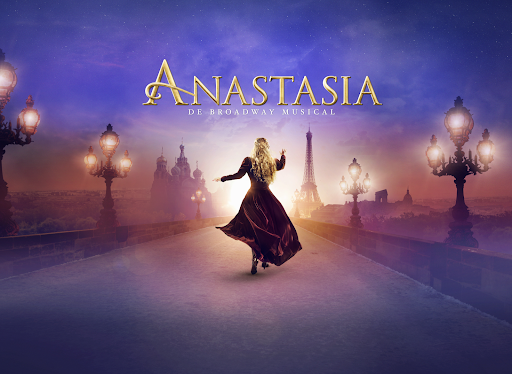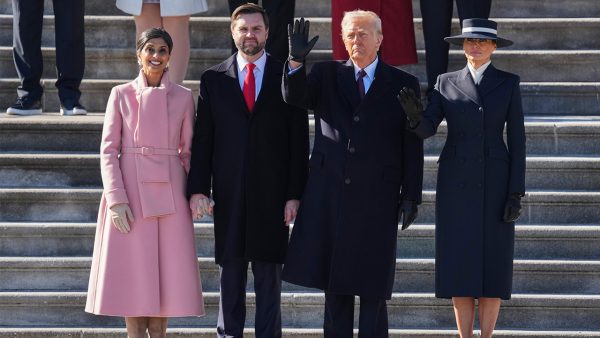Historical Fashion Accuracy in Film: Les Mis (2012)
Fashion editor Chloe Stefani provides an in-depth look at the accuracy of Cosette’s(far right) outfits in Les Mis 2012.
With the Montrose production of Les Miserables right around the corner and the piece itself being set in the past, I thought there was no better movie to focus on for my fashion history series. Les Miserables, a classic Broadway musical-turned movie musical, has been one of my favorites for as long as I can remember. However compelling the story may be, this movie’s historical setting sparks the question: Are these costumes historically accurate? We’re going to focus on one of Cosette’s looks from the film, primarily because she, being wealthy, would most likely represent the fashion trends of the era best. This is because the poorer characters would be wearing whatever they could find — from outdated pieces to rags — so it would be much more difficult to decipher whether their looks would be accurate or not. I would like to start by making it clear that this article is in no way meant to discredit the costume designer of the film. Sometimes historical accuracy in costumes could have been the designer’s intention, but the artistic vision of the director and sometimes even the actors themselves can often override these decisions. Because of this, some important elements can get lost in portraying fashions with historical accuracy in movies. If you want more information on this topic, I highly recommend the article titled 1830-1839: Fashion History Timeline on https://fashionhistory.fitnyc.edu/1830-1839/, as I took a lot of information from that article.
If we are going to decipher whether these costumes are accurate, we need to establish a time period. The reason I love fashion history so much is because the clothing really reflects what was going on during the time period. The setting takes place in France after the fall of the Second Empire, beginning the film in 1815, then jumping ahead in time to 1832, where Cosette is wearing this particular ensemble. During this time in history, there was a huge financial gap between the classes, with the upper class enjoying the most lavish and luxurious of things, and the peasants left with almost nothing. And, because Cosette is of the higher class, we will focus primarily on fashions of those regards.

Let’s start with her hair. I can’t stress my confusion enough with why her hair is down. The only people who would be wearing their hair down would have been young girls, and since we pick up when Cosette is around 19, she would not be wearing this style. It would also be hard to argue that she is “still young” considering this film also portrayed her adult mother, Fantine, with her hair down as well (Also, Fantine’s hair is down while she’s working in a factory. I could honestly write an entire rant article about that alone, but I’ll spare you). With these two things in mind, it’s clear that the creative team on this film did not do much research on the French hairstyles of the 1830s. It’s important to note that during this time period, upper class fashions and styles were tied closely to Romanticism, being exuberant and dramatic. Realistically, to show off her wealth, Cosette would be wearing a (very) curled updo (see image for reference). These curled updos varied in style, but were all equally gravity defying, further adding the dramatic styles of the day. “Hair was arranged in high chignons of loops, braids, or curls, while the hair at the front was left in rows of sausage curls or hanging in ringlets,” says Fashion History Timeline. For nighttime, to add more accessory, Cosette would have adorned her hairstyle with feathers, ribbons, or other nature inspired accessories. However, for daywear, she would be wearing a bonnet, which we can clearly see the movie got correct. Bonnets were used to protect one’s hairstyle from wind and to protect one’s complexion from the sun (as being very pale was a popular trend of the day), and were extremely large. They normally had a silk ribbon which secured the bonnet under the chin, which we can see the movie also got correct. However, the ribbon and bonnet were often a much more vibrant color than the dress to add some extra drama to one’s look, so Cosette’s bonnet and ribbon would not be matching her dress here. I think the movie could have done more research in this department.

Next, let’s move down to her dress. During the first half of the decade, extravagant dresses in varying colors that included giant sleeves were seen as the most fashionable, until 1836 when the “fashionable woman” was no longer in style. Instead, modesty came into fashion, further helped by Queen Victoria taking the throne in 1837, as she rejected extravagance and was a modest role model. But, since this point in the story takes place early in the decade, it’s safe to say that the “fashionable woman” was still held in high regard. The upper half of the silhouette was the most extravagant, and the overall silhouette included large, puffy sleeves (referred to as “Leg-of-mutton sleeves” or “gigot” sleeves) a triangular bodice, a nipped waist that fell just above the natural waistline, and a skirt that stopped just above the ankle.
This silhouette would be achieved through a corset, multiple petticoats, an early version of the bustle, and sleeve supporters to get the biggest possible sleeves (For extra support, sleeve supporters were filled with feathers, or even sometimes wire to get the desired sleeve shape). And, as we can see, the movie got the silhouette correct. She is seen wearing a dark navy blue, which would’ve been appropriate for the daytime, because it is not too vibrant of a color. The very vibrant colors, such as pinks, purples, light blues, reds, and greens, were more appropriately worn at nighttime events. In addition to her navy blue dress, Cosette is wearing a matching pelerine, or triangular piece of fabric worn over the shoulders, to further emphasize the desired nipped waist. I love this attention to detail. However, though it is possible that it could have matched her dress, the pelerine would have most likely been white. We can also tell that Cosette’s dress is made of silk, which is definitely accurate for someone of her status.
Now let’s talk about her gloves and accessories. Cosette is wearing dark gloves made of lace that match her dress. Realistically, yes, of course Cosette would be wearing gloves, just not ones of this material and color. It’s important to acknowledge that “glove etiquette” played a large role in upper class society during this time period. The type of gloves someone wore, however silly it sounds, communicated one’s status, or situation. For example, dark gloves, like the ones Cosette is wearing, would’ve actually been worn by older women or widows in mourning. In reality, Cosette would be wearing white gloves because they were much more suitable for young women, and because, according to a fashion expert, “light colored gloves were more acceptable as they were considered more delicate and elegant.” One etiquette book from the period even goes as far as to state: “[L]ight gloves are more esteemed than dark ones” and “..on formal occasions if a guest met an ungloved host or hostess, the host or hostess was advised to ‘have no occasion to feel offended if others also in full dress should extend a salutation with a gloved hand.’” In addition to her gloves, Cosette is also wearing a wide belt, with a big buckle in the center. This is 100% accurate, as belts helped achieve the effect of a small waist. She could have also been wearing some casual jewelry to further show off her wealth, however, that element was not a necessity during this time period. Her makeup would have been subtle (the French were much less strict about makeup than Americans), with just some pink rouge on her cheeks and lips. Makeup, however, would go out of style completely in the next few years with the rise of modesty.
Let’s finally talk about what shoes she would be wearing, since we do not get a good look at them in the film. For someone of her status, Cosette would most likely be wearing either black silk or leather slippers that tied around the ankle. Paired with this, she would also (of course) be wearing white stockings, because they were a must during this period in history.
Overall, the fashions in Les Miserables are definitely pretty accurate. The film does a great job of reflecting this time period’s extravagance, from the dramatic silhouettes to giant bonnets. Though a few creative liberties were taken with this look (like the hairstyle *sigh*), that does not take away from the shocking accuracy of some of the other elements portrayed. I strongly recommend giving this film a watch now that it’s on Netflix, and I hope you will all come to the Montrose production as well!
Chloe Stefani ‘24, News and Fashion Editor











